
views
Is using gasoline an effective way to kill ground bees?
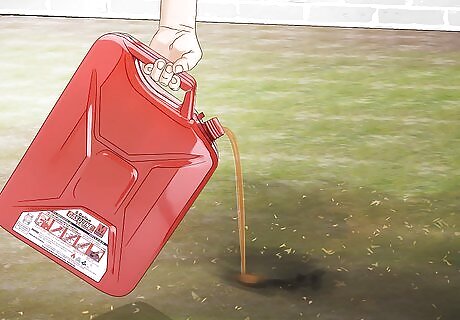
Some people find gasoline effective, although experts advise against it. People who use the gasoline method typically place a screen and a long piece of wick over the nest's opening, then pour gasoline directly into the nest before lighting the end of the wick to ignite the fuel. However, experts caution that pouring gasoline directly into the ground is bad for the environment and that the gasoline could potentially leak into your local water supply. Also, exposing yourself to gasoline can cause unwanted side effects, like dizziness, vomiting, nausea, headaches, and other serious issues. Gasoline is also extremely flammable and can be a major fire hazard.
What are some other ways to get rid of ground bees?

Spritz the bees' nest at night with some diluted vinegar. Combine 1 part water and 1 part white vinegar in an empty spray bottle and shake the ingredients together. Once the sun goes down and the bees are less active, spray the vinegar mixture all over the entrance to the nest. The following day, clear away all the dead bees around the nest. This tip isn’t expert-verified, but it’s a popular solution among home gardeners.
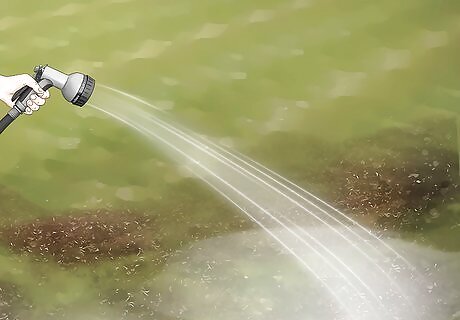
Soak your lawn with water. Set up a sprinkler in your yard, or take some time to soak the ground with a hose each day. The bees won’t want to nest in extremely water-logged soil. To prevent ground bees from nesting in your yard in the future, soak the soil in very early spring before the bees make their nests.
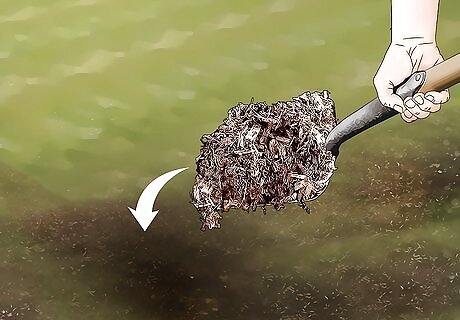
Spread mulch or plant ground cover. Cover up any open, sandy, and well-drained sections of soil with a solid layer of mulch so the bees can't easily access their nest. Planting plenty of ground cover can also block off nesting spots. Sedum, salvia, pachysandra, creeping jenny, hostas, ground ivy, and chamomile are just a few types of ground cover that you can choose from.

Plant thick turfgrass. Ground-nesting bees really love sparse, grass-free areas—this makes it a lot easier for them to build their nests with mounds of soil. Planting a layer of thick turfgrass will cover up potential nesting spots, and it may send the bees packing. Bentgrass, Kentucky bluegrass, ryegrass, tall fescue, fine fescue, and bermudagrass are some well-known types of turfgrass.
Are ground bees dangerous?
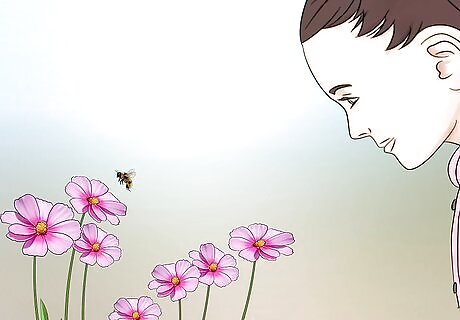
Most ground bees are completely harmless. The vast majority of ground bees actually help pollinate the world around them, making them very helpful to the environment. Plus, most nesting bees are extremely passive and unlikely to sting you. Because of their environmental benefits, experts suggest leaving these critters alone. Bumblebees, sweat bees, leaf-cutting bees, digger bees, digger wasps, and cicada-killer wasps are the most common culprits that you’ll find in your yard. Still, these bees and wasps aren’t very aggressive and aren’t very likely to sting you. One of the most aggressive ground bees that you could potentially come across is a yellowjacket. Thankfully, they have thick, yellow and black stripes going up the abdomen, making them easy to identify. Ground bees pose the biggest risk to people with allergies. If you have a severe bee or wasp allergy, it might be worth getting rid of the bees.
How long do ground bees stay around?
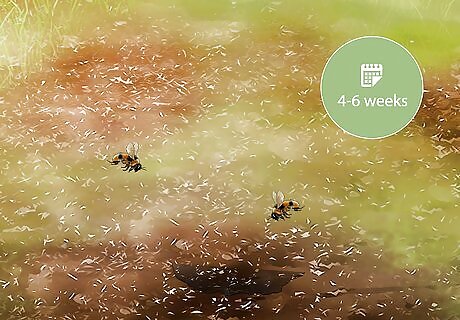
Ground bees stick around for about 4-6 weeks. Most solitary, ground-nesting bees start appearing in March or April, where they start to search for mates. More eggs are created during the spring, which will hatch and develop during the rest of the year. Yellowjackets are most active during the late summer and early fall months.
How do you tell if you have ground bees?
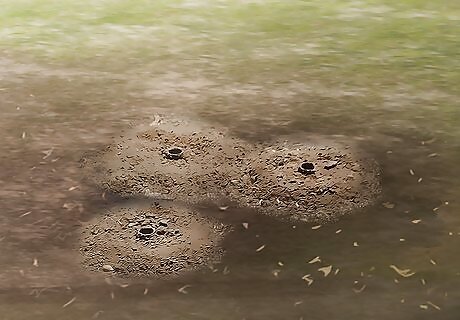
Look for pointed, cone-like piles of dirt with a hole in the center. Ground bee nests look pretty similar to anthills, with one distinct difference. Unlike anthills, which have a teeny-tiny hole for entry and exit, ground bee nests have a wider, pencil-sized opening in the middle. Ground bees are big fans of well-drained, sandy soil without a lot of grass or brush nearby. If your property is pretty sparse, ground bees might be interested in making a nest there.


















Comments
0 comment